Kraków 2020-10-17
GSz-23 air gun
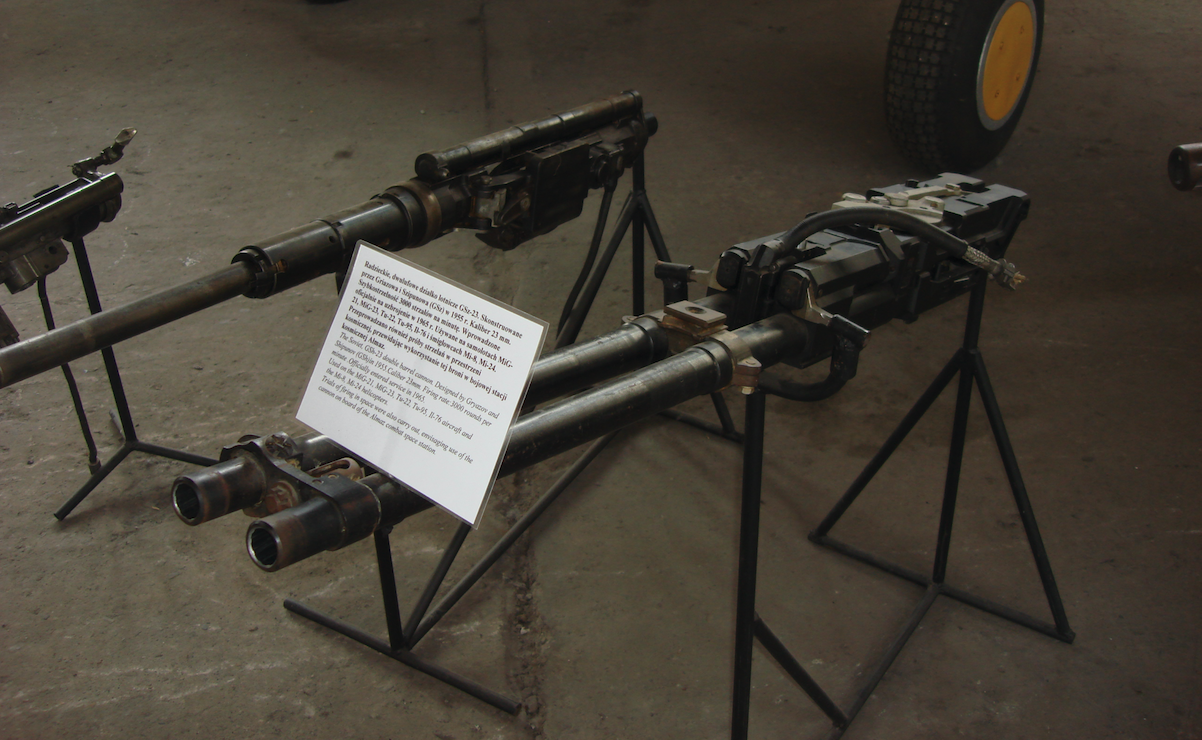
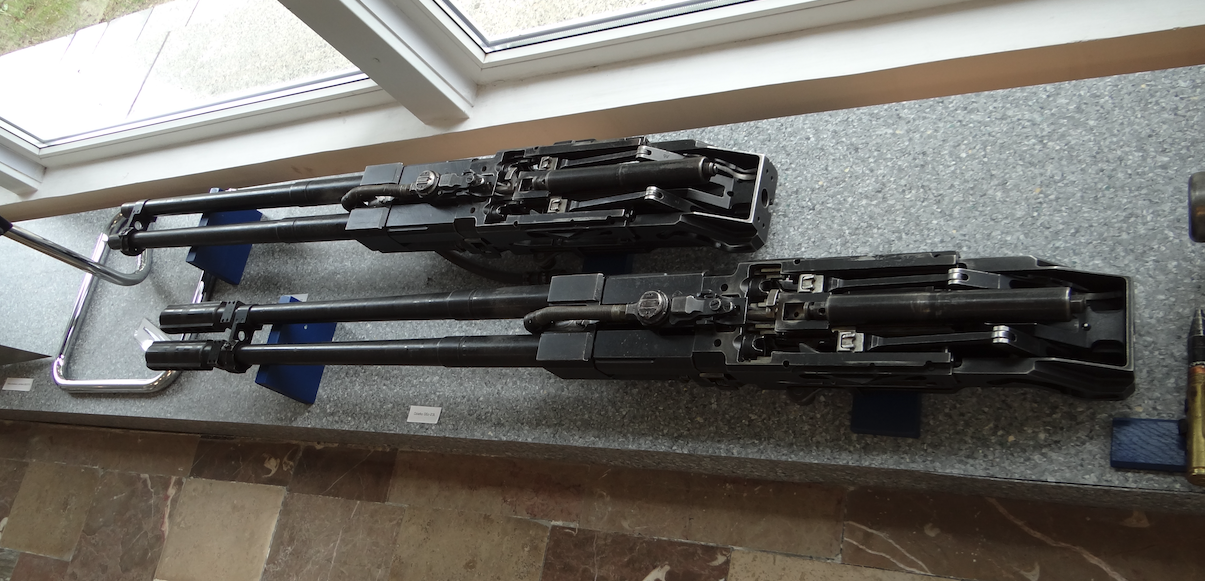
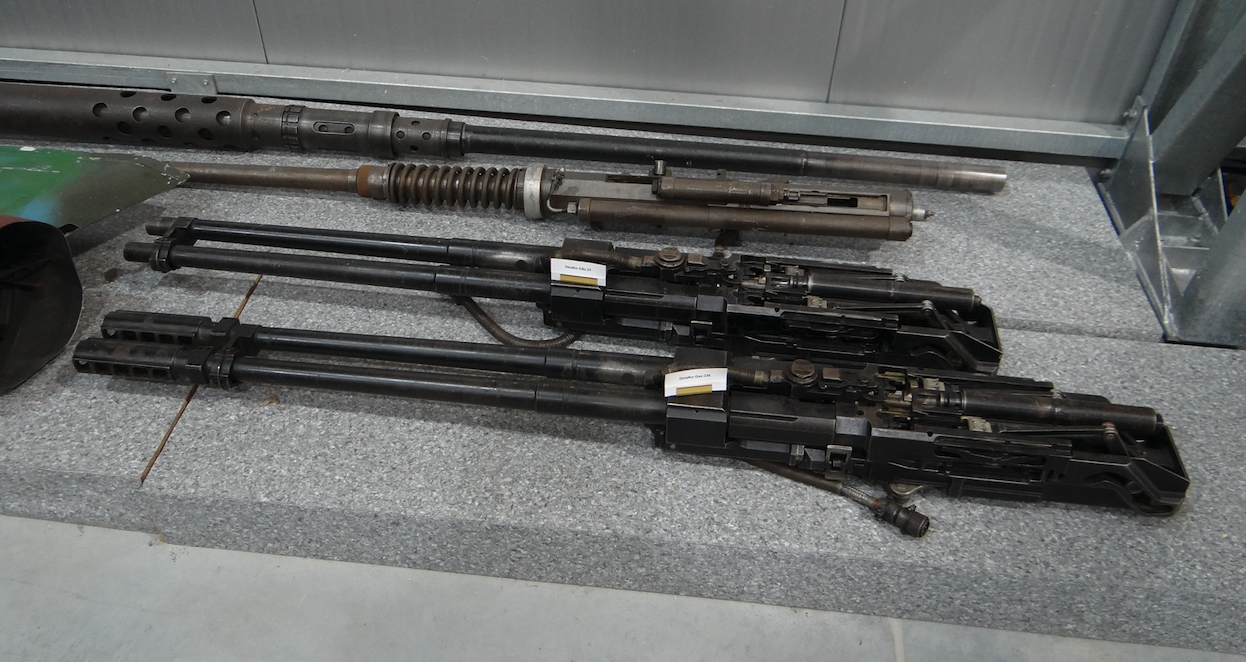
The GSz-23 gun, in Russian ГШ-23, is an abbreviation of the names of the designers Griaziew-Shypunov. The GSz-23 cannon is a 23 mm double-barreled automatic cannon, designed by the CCCP as an on-board shooting weapon for aircraft. The GSz-23 gun was introduced into service in 1965. The cannon replaced the popular NR-23 single-barrel cannon of the same caliber. It also replaced other earlier plots.
The GSz-23 cannon works on the Gast principle. Karl Gast was a German designer who, in 1916, patented his machine gun system with two barrels and two disc magazines. The rate of fire of this rifle was 1,600 rounds per minute, and then even 1,800 rounds per minute. The rifle weighed 31 kg. He fired 7.92 mm ammunition.
The Gast machine gun operated on the principle of short barrel recoil. The essence of the Gast's system were two barrels and the connection of their locks with a swinging arm, also the recoil of the bolt of one barrel reloaded the other barrel. The weapon was fired from a closed bolt. After inserting the rifle magazines, the shooter pulled back the breech handle, which pulled back the bolt, which took the cartridge on the way back, inserted it into the cartridge chamber, at the end of the movement tensioning the spring of the firing pin and releasing the breech handle, which did not move during shooting. The weapon had one trigger connected by a lever to the locks of both barrels. After releasing the firing pin, a shot was fired, the slide and the barrel started to move backwards. The lock, hitting the projection, was unlocked, and its movement was additionally accelerated, pushed by a special cam. The backward movement of the bolt, via the connecting lever, pushed the bolt of the second barrel rapidly forward, which took the cartridge and introduced it into the barrel. The first barrel's breech ejector collected the shell and ejected it from the bottom of the weapon, and the second barrel's breech was locked, its firing pin taut and ready to fire. While the trigger was still pulled down, the second barrel was fired, continuing the cycle of the rifle's operation.
This solution ensures a high rate of fire, with a simultaneous low design complication. The aviation cannons operating on the Gast principle were developed in the West, where the GE-225 cannon, for example, was developed, but did not gain the popularity of the former CCCP.
The GSz-23 cannon was constructed by Grazjew and Szipunov using a 23 × 115 mm cartridge developed in 1955 for the AM-23 cannon. State ground tests were carried out in 1958. After that, air tests began, after which the gun was approved for serial production at the facilities named after Diegtarev. In the first years of operation, design problems, work jams and low service life of the structure were revealed. Officially, the GSz-23 cannon was adopted in 1965.
The gun has two barrels, but apart from the double barrel-lock assembly, all elements are single. As a result, the gun has a weight typical for single-barreled guns. The use of alternating charging gives a high rate of fire, additionally increased by the use of accelerators in the design of automation.
The GSz-23 Ł version of the cannon has a muzzle brake that reduces the recoil force.
The GSz-23 cannon was the basic weapon for the later versions of MiG-21 fighter planes from the version and all MiG-23. The containers with the GSz-23 cannon were used in the Jak-28, Su-15, Su-17, and Jak-38 aircraft. They were also used in the tail firing positions of Tu-22 bombers and later Tu-95 versions, Tu-142 patrols, Ił-76 and Il-78 transporters. The Mi-24 helicopter carried the UPK-23-250 container. A later version of the Mi-24 WP helicopter, it had an NPPU-23 mobile shooting turret, introduced as a result of the experience of the war in Afghanistan.
The GSz-23 gun was also tested in space. The CCCP envisaged the construction of an armed space station "Almaz".
Data gun GSz-23:
Weight depending on version 49.2 - 50.0 kg. Standard length of GSz-23 version 1.38 m. Standard length of GSz-23 L (L) 1.54 m. Barrel length 1.00 m. Cartridge 23x115 mm, AM-23. Cartridge weight 0.325 kg. Projectile weight 0.174 kg. Caliber 23 mm. The maximum rate of fire of the GSz-23 is 3,000 rounds per minute. The maximum rate of fire of the GSz-23 Ł is 3,400 - 3,600 rounds per minute. The initial speed of the projectile is 715 m / s.
GSz-23 in Poland.
MiG-21 planes of the MiG-21 PF / PFM version were put into service without small arms. It was the effect of rocketization of the battlefield. However, it turned out that small arms are essential. For the MiG-21 PF / PFM planes, the GP-9 nacelle was developed (Puszecznaja nacelle) containing a double-barreled 23 mm GSz-23 cannon with a reserve of 200 rounds. The nacelle is mounted on the same hitch as the additional fuel tank. It must be clearly said that the MiG-21 PF / PFM has been able to move this container already during their operation.
The versions of the MiG-21 M, MiG-21 MF and MiG-21 bis aircraft permanently have a centrally located GSz-23 double-barreled cannon under the fuselage, with a supply of 200 rounds of ammunition.
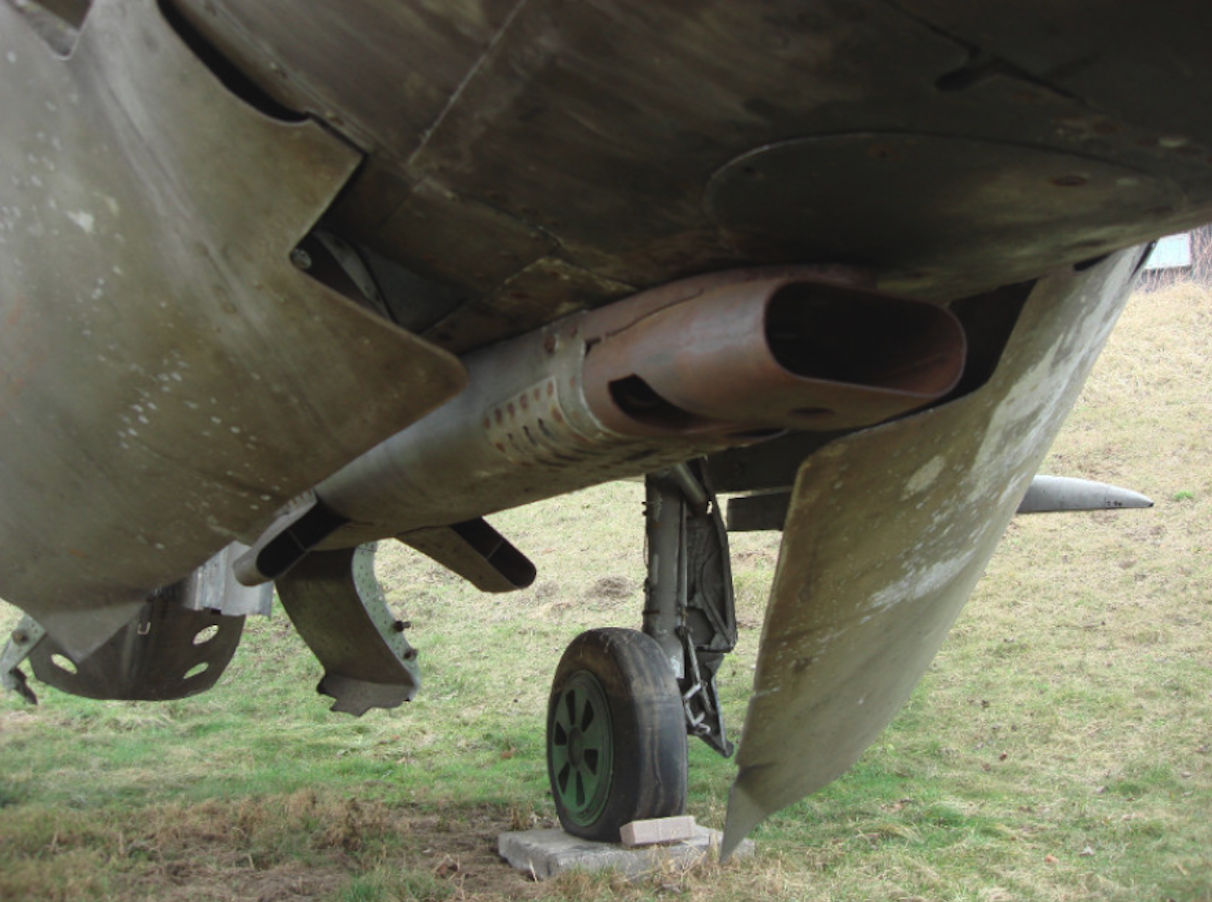
The MiG-23 planes were equipped with the Grazjew and Szipunow GSz-23 Ł guns, 23 mm caliber, 200 rounds, permanently mounted.
The GSz-23 cannons were also used in the form of trays suspended from hooks under combat aircraft. The first version was the UPK-23-250 cartridge. The UPK-23 container is a suspended aviation container developed in the CCCP. Own weight 78 kg, and after loading 250 cartridges the weight is 217 - 218 kg. Length: 3.166 m. Diameter: 3.40 m. It carries the GSz-23 L (GSz-23 L) double-barreled cannon with 250 rounds of ammunition. The UPK-23 cartridge was developed for the needs of the military aviation around 1971 and entered service in 1973. In the course of work on the container, emphasis was placed on its greatest possible simplicity and ease of use and ground handling. Care was taken to make the container as aerodynamic as possible. In Poland, the UPK-23 container could be carried by planes and helicopters: Mi-8, Mi-24, Su-22, MiG-23.
The second was the SPPU-22 reservoir. The SPPU-22-01 (KU-22K) computer-controlled shooting container with a total weight of 290 kg. In the front it is equipped with a double-barreled GSz-23 gun placed on a mobile carriage, thanks to which it can be tilted downwards by an angle of 23 degrees. The rear houses the control system and 260 rounds. The entire container can be hanged with both barrels to the front and to the rear. Data must be entered into the computer before the flight - flight speed and altitude.
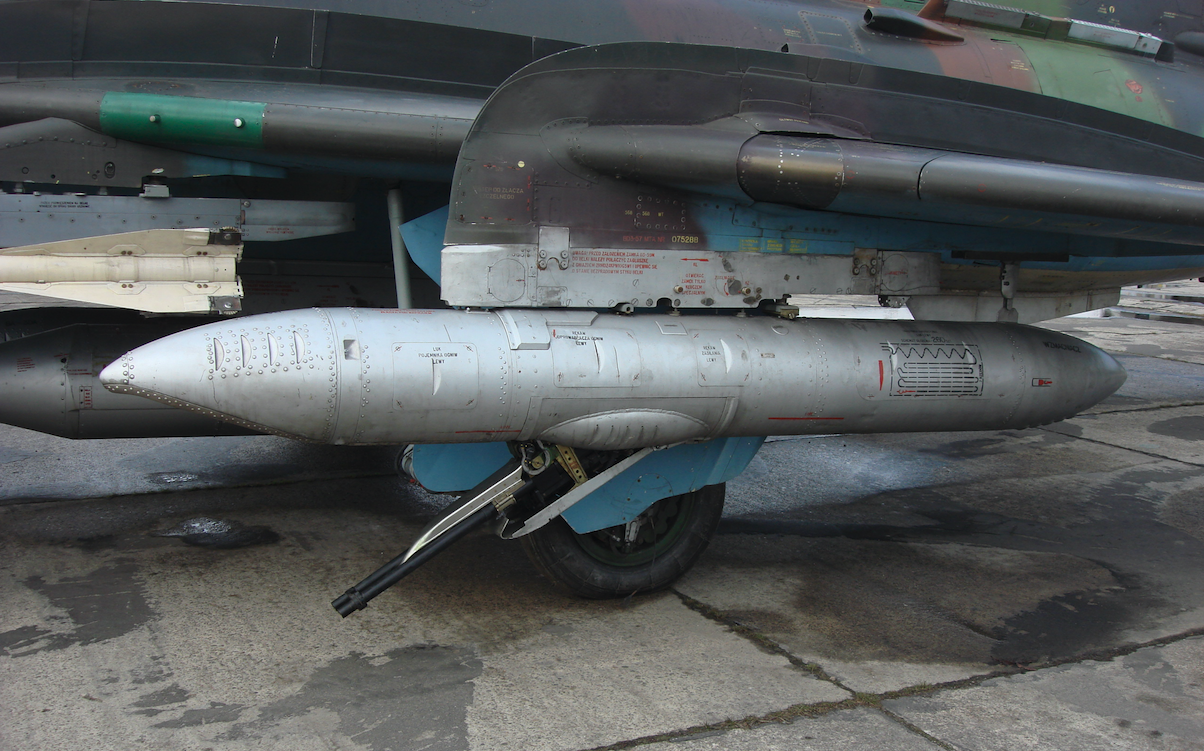
Written by Karol Placha Hetman
